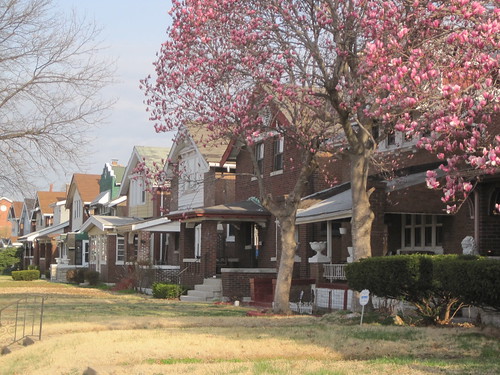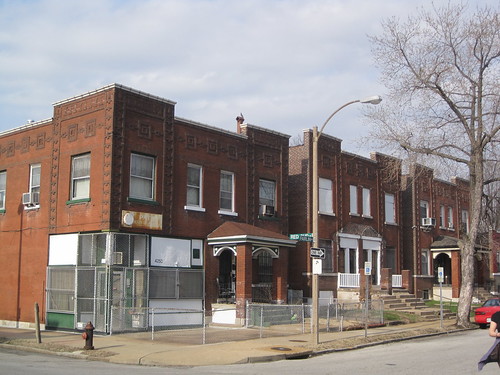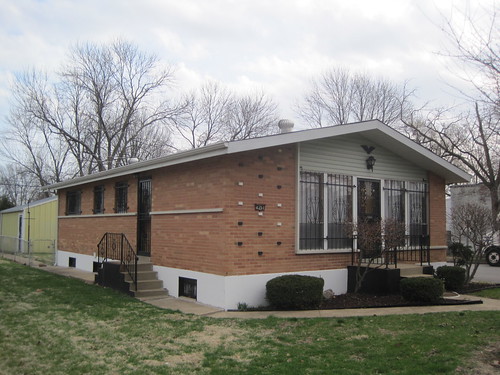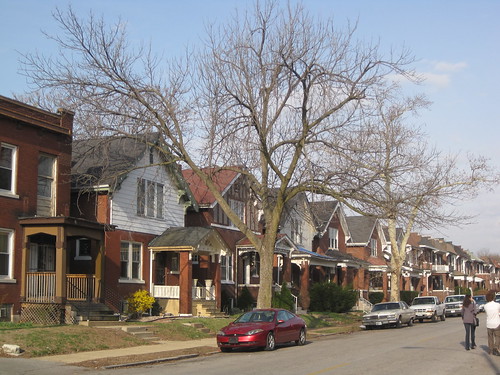We are in the final stretch of the process of securing historic district status for most of the O’Fallon neighborhood. By early May, Preservation Research Office will have submitted the first of two National Register of Historic Places nominations that cover almost all of the historic neighborhood. The O’Fallon Park Historic District will encompass the areas east and south of O’Fallon Park, while the Fairground Park Historic District will encompass an area west of Fairgrounds Park south of Lee Avenue, north of Natural Bridge Avenue, west of Fair Avenue and east of Newstead Avenue.
The historic district designations are sponsored by the Acts Partnership with the assistance of Alderman Antonio D. French (D-21st). Work began last February on a 1,796-building survey that had led to the two historic district nominations currently being drafted.
The decision to split the neighborhood is based on subdivision history and development patterns. The area of O’Fallon west of Fairgrounds Park was first developed after the platting of White Place in 1859, but construction was slow. Additional subdivisions were Mary E. Burson’s Subdivision (1889), Fairground Place (1910), Lucille’s Fairground Park Addition (1912) and several others. Most of the building stock there dates to between 1910 and 1940, somewhat later than the northern part of O’Fallon that started development in the 1890s and largely built out by 1930. Like the northern part of the neighborhood, the area is remarkably intact. Here are a few photographs.








3 replies on “O’Fallon Historic Districts Progressing”
breathtaking.
More pictures please! Gotta show them how O’Fallon and Penrose can compete with any neighborhood in the city! : )
I am still amazed at how the northern portion of St. Louis is composed of much the same housing stock, developed at the roughly the same time periods. There is a row of castellated single-family houses on Southwest Ave., east of Brannon, that could be the doppelganger to the structures pictured here. Ironically, these buildings, even the vacant one on the right, are in better condition, and still retain all of the original parapet walls and caps with the corbelling below, than the ones on Southwest. Ironically, I note, because it is always assumed that the north is in a profoundly more deteriorated state, everywhere, than the south. Take a bike ride through parts of Dutchtown, Benton Park West, and Gravois Park and that will change one’s mind.